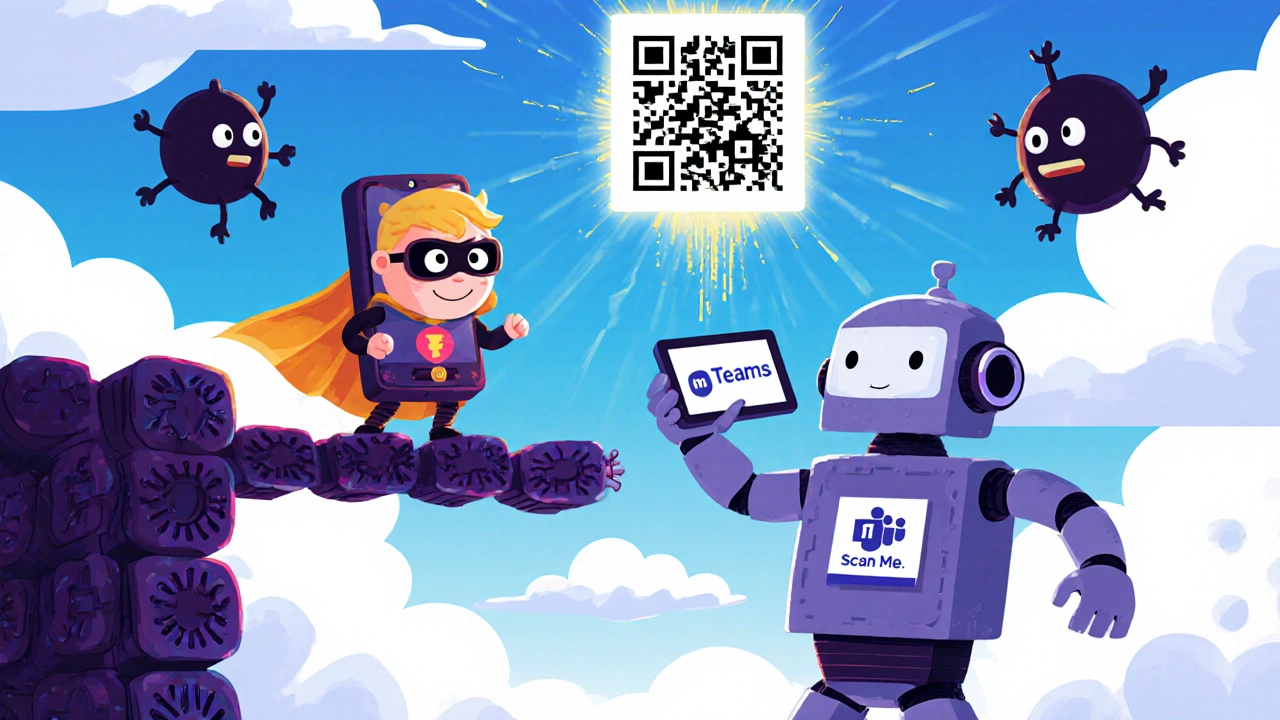Every time your VoIP phone rings, it’s because a device somewhere on the network proved it was allowed to be there. That’s not magic - it’s SIP registration. It’s the quiet, behind-the-scenes process that says, "I’m John’s desk phone, and I’m online at 192.168.1.105. Send calls here." But before the system believes that, it demands proof. And that proof? It’s authentication.
Why SIP Registration Even Exists
Imagine if anyone could pretend to be your office phone and start receiving all your calls. That’s what would happen without SIP registration. It’s not just about knowing where a device is - it’s about knowing it’s real. SIP, or Session Initiation Protocol, was designed in the late 90s to make voice calls over the internet work. But as VoIP grew, so did hackers. Early systems had no way to stop someone from spoofing a phone number or hijacking a line. SIP registration fixed that by forcing every device to log in before it could receive calls. It’s not a login screen you click. It’s a digital handshake that happens in milliseconds. Your phone, softphone, or ATA sends a message to your VoIP server saying, "Hey, I’m here." The server replies, "Prove it." And only after the proof checks out does the server say, "Okay, you’re allowed to receive calls."The Four-Step Authentication Dance
The process follows a strict script laid out in RFC 3261. Here’s how it actually works:- First attempt: Your device sends a REGISTER request. It includes your SIP address (like sip:[email protected]), how long you want to stay registered (usually 3600 seconds), and your IP address.
- Server says "Nope": The registrar doesn’t accept it yet. Instead, it sends back a 401 Unauthorized response. This isn’t an error - it’s part of the plan. Inside that response is a WWW-Authenticate header with three key pieces: a realm (your company’s domain name), a nonce (a one-time random string), and the algorithm to use (usually MD5).
- You prove who you are: Your device takes your password, the nonce, your username, and the realm, and runs them through a formula:
MD5(MD5(username:realm:password):nonce:MD5(REGISTER:digestURI)). The result? A unique hash. It sends that back in an Authorization header. - Server checks and approves: The server runs the exact same formula using the stored password. If the hash matches, it sends back a 200 OK. Registration is confirmed. Your phone is now on the network.
MD5: The Old Workhorse with Cracks
Most VoIP systems still use MD5. Why? Because it’s everywhere. It works with every phone, every PBX, every softphone from the last 20 years. According to a 2023 SIP School survey, 78% of enterprise systems still rely on it. But MD5 is broken. Cryptographers have known for years it’s vulnerable to collision attacks. In theory, someone could generate a fake hash that matches yours. In practice, though, SIP’s use of nonces makes direct attacks harder. The nonce changes every time, so a captured hash can’t be reused. That’s why many experts say, "MD5 is weak, but not dangerous here." Still, it’s not ideal. MD5 adds 23-37ms to registration time. It doesn’t protect against weak passwords. And if someone gets your username and password (say, through a phishing attack), they can register any device - even one they control.
What’s Replacing MD5?
The industry is slowly moving on. Three main alternatives are gaining ground:- AKA (Authentication and Key Agreement): Used in 98% of VoLTE networks. Instead of just a password, it uses a SIM card’s secret key and a challenge-response system with sequence numbers. It’s mutual - the server proves it’s real too. That stops fake base stations from intercepting calls. But it needs hardware support. That’s why it’s common on phones, rare on desk phones.
- Cisco’s UserID Association: Cisco’s Unified Communications Manager (CUCM) doesn’t just check your password. It checks if you’re even allowed to use that specific phone. If John’s password is correct but he tries to register a phone not assigned to him, the system says 401 Unauthorized anyway. This stops stolen credentials from being used on unauthorized devices.
- Microsoft Teams’ *55* Code: Teams uses SIP under the hood, but adds a second layer. After entering your credentials, you must dial *55* followed by a six-digit code shown on your Teams admin portal. This ties the device to a human, not just a login. It’s clunky, but it works - failure rates dropped from 32% to 4% after adding this step.
NAT and Firewalls: The Silent Registration Killers
Here’s where things break in real life. If your phone is behind a router (which it always is), the IP address it reports in the REGISTER message might be wrong. Your phone thinks it’s at 192.168.1.105. The server sees it coming from 85.201.45.12. That mismatch can cause registration to fail. Solutions? Session Border Controllers (SBCs). These devices sit between your network and the internet. They rewrite the Contact header in the REGISTER message so the server sees the right public IP. But SBCs need careful setup. If they’re misconfigured, the phone sends a REGISTER, gets a 401, sends a response - but the response never reaches it because the firewall blocks the return traffic. Another issue: NAT timeouts. Most routers kill idle connections after 60-120 seconds. SIP registration expires every 3600 seconds, but if the connection drops before then, the phone disappears. That’s why most systems send an OPTIONS ping every 30 seconds - just to keep the path open.
What Goes Wrong - And How to Fix It
Here are the top three real-world problems:- 401 Unauthorized, but it loops: The phone keeps getting 401s and never gets to 200 OK. Check the password. Check the realm. Make sure the realm on the phone matches the server exactly - including capitalization. A mismatched realm is the #1 cause.
- 403 Forbidden: This usually means the server knows the credentials are right, but something else is wrong. In Cisco systems, it’s often a device not assigned to the user. In Active Directory setups, it’s a sync delay - password changed in AD, but CUCM hasn’t updated yet. Wait 5-10 minutes, or force a sync.
- No registration after reboot: Check the NAT settings. Ensure your SBC is rewriting the Contact header. Look at SIP traces. If you see the REGISTER going out but no 401 coming back, your firewall is blocking responses. Open UDP ports 5060-5061 and allow outbound traffic on those ports.
